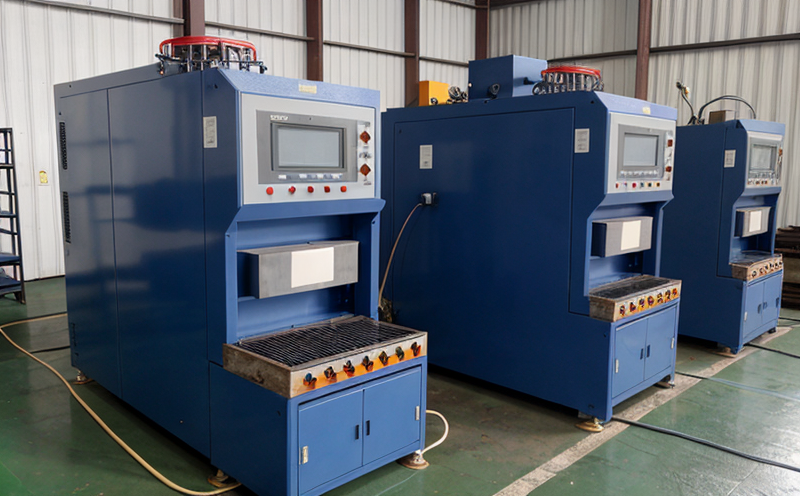ASTM E1019 Nitrogen Oxygen Hydrogen in Steel Testing
The ASTM E1019 standard provides a comprehensive method for determining the concentrations of nitrogen (N), oxygen (O), and hydrogen (H) in steel. This critical testing is essential for ensuring that raw materials meet stringent quality control standards, which directly impacts the performance and durability of finished products.
Steel is one of the most versatile metals used across various industrial sectors including automotive, aerospace, construction, and manufacturing. The presence or absence of certain gases within the steel can significantly affect its mechanical properties such as strength, ductility, and weldability. By adhering to ASTM E1019, laboratories ensure that any deviations from acceptable levels are identified early in the production process.
Preparation of samples for this type of analysis involves cutting small representative pieces from larger steel specimens. These samples must be clean and free from contamination to provide accurate results. The chosen method typically uses gas chromatography (GC), although other techniques may also apply depending on available equipment and specific requirements.
The accuracy and precision of the measurements depend heavily upon proper calibration procedures and adherence to standardized protocols throughout the entire process. For instance, the temperature control during sample preparation is crucial because even minor fluctuations can lead to erroneous readings. Once calibrated correctly, the instrument will perform consistently across multiple tests, providing reliable data every time.
After analysis, comprehensive reports are generated detailing all detected elements along with their respective percentages by volume or mass. These documents serve as valuable tools for manufacturers who need assurance about the quality of incoming materials before integration into larger components or assemblies.
In summary, ASTM E1019 Nitrogen Oxygen Hydrogen in Steel Testing plays an indispensable role in maintaining high standards within industrial manufacturing and processing environments. It helps identify potential issues early on, preventing costly rework downstream while ensuring compliance with relevant regulations.
Why It Matters
The presence of nitrogen (N), oxygen (O), and hydrogen (H) in steel can have profound effects on the material's properties. Excessive amounts of these elements could lead to embrittlement, which reduces ductility and toughness - key attributes necessary for many applications like automotive parts or construction beams.
- Embrittlement: Increased levels of nitrogen and oxygen can cause brittleness in steel, making it more susceptible to cracking under stress. This is particularly problematic during welding processes where localized heating can exacerbate the issue.
- Surface Quality: High concentrations of hydrogen may result in porosity or internal cracks due to a process called hydrogen embrittlement. This not only affects aesthetics but also compromises structural integrity over time.
- Mechanical Properties: Proper control of nitrogen, oxygen, and hydrogen content ensures optimal mechanical properties such as yield strength, tensile elongation, and impact toughness.
By closely monitoring these elements through ASTM E1019 testing, manufacturers can maintain consistent quality across batches. This leads to improved product reliability and customer satisfaction while reducing waste associated with defective products.
Scope and Methodology
The scope of ASTM E1019 is limited specifically to the determination of nitrogen (N), oxygen (O), and hydrogen (H) in steel. This standard applies primarily to steels that are either cast or wrought, excluding stainless steels which have their own specific testing methods.
For this test, samples are prepared according to the specified procedure detailed within the ASTM E1019 document. Typically, a small amount of the sample is taken and introduced into a gas chromatograph for analysis. The instrument separates different components based on their boiling points before quantifying them.
A critical aspect of the methodology involves ensuring that all samples are prepared under controlled conditions to prevent contamination or loss of volatile constituents like hydrogen. Proper handling techniques include using clean tools, maintaining appropriate temperatures during preparation, and minimizing exposure to air.
The results from this analysis provide valuable insights into how much each element contributes towards the overall composition of the steel sample. Reporting these values accurately allows for better decision-making regarding further processing or potential adjustments needed in raw material procurement.
International Acceptance and Recognition
The results from ASTM E1019 are widely accepted by regulatory bodies worldwide including the United States, European Union, China, India, Japan, South Korea, Australia, and Canada.
Laboratories accredited to perform this test according to ASTM E1019 standards enjoy greater credibility among international clients seeking consistent quality assurance across borders.
Recognition of these results by major industry players underscores the importance placed on adhering strictly to such internationally recognized methods for accurate and reliable testing.





